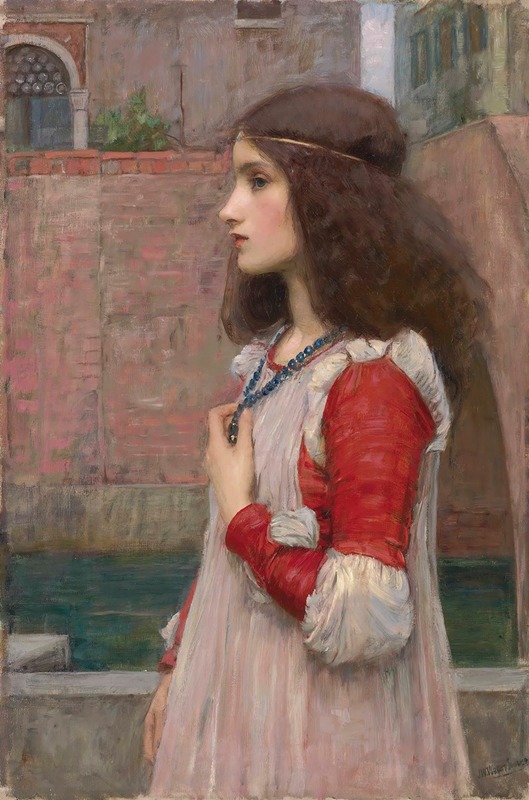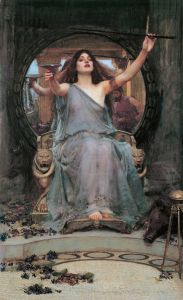
Juliet
A hand-painted replica of John William Waterhouse’s masterpiece Juliet, meticulously crafted by professional artists to capture the true essence of the original. Each piece is created with museum-quality canvas and rare mineral pigments, carefully painted by experienced artists with delicate brushstrokes and rich, layered colors to perfectly recreate the texture of the original artwork. Unlike machine-printed reproductions, this hand-painted version brings the painting to life, infused with the artist’s emotions and skill in every stroke. Whether for personal collection or home decoration, it instantly elevates the artistic atmosphere of any space.
John William Waterhouse, a prominent British painter associated with the Pre-Raphaelite movement, created the painting Juliet in 1898. This artwork is one of Waterhouse's many depictions of literary and mythological subjects, reflecting his fascination with themes of romance, beauty, and tragedy. The painting portrays Juliet, the heroine of William Shakespeare's famous tragedy Romeo and Juliet.
In this work, Waterhouse captures Juliet in a moment of quiet contemplation, emphasizing her youth, beauty, and the emotional depth of her character. She is depicted seated, dressed in a richly detailed gown, with her surroundings evoking a sense of Renaissance Italy, the setting of Shakespeare's play. The artist's attention to detail in the textures of the fabric, the architecture, and the natural elements demonstrates his skill and dedication to creating a vivid and immersive scene.
Waterhouse's Juliet reflects the influence of the Pre-Raphaelite Brotherhood, a group of artists who sought to revive the detail, color, and complexity of early Renaissance art. Although Waterhouse was not an original member of the Brotherhood, his work often aligns with their ideals, particularly in his focus on literary heroines and his use of vibrant colors and intricate compositions.
The painting is notable for its emotional resonance, as it captures Juliet's inner turmoil and longing. Waterhouse's interpretation of the character aligns with the romanticized view of Shakespeare's tragic heroine, emphasizing her innocence and the poignancy of her doomed love story. The artist's ability to convey emotion through subtle expressions and body language is a hallmark of his work.
Juliet is part of Waterhouse's broader body of work that explores themes of love, loss, and the complexities of human emotion. His paintings often draw from classical mythology, literature, and poetry, making him one of the most celebrated artists of his time. Today, Juliet is appreciated for its artistic merit and its contribution to the enduring legacy of Shakespeare's play.
The current location of the painting is not widely documented, and it is unclear whether it resides in a public collection or remains in private hands.


















